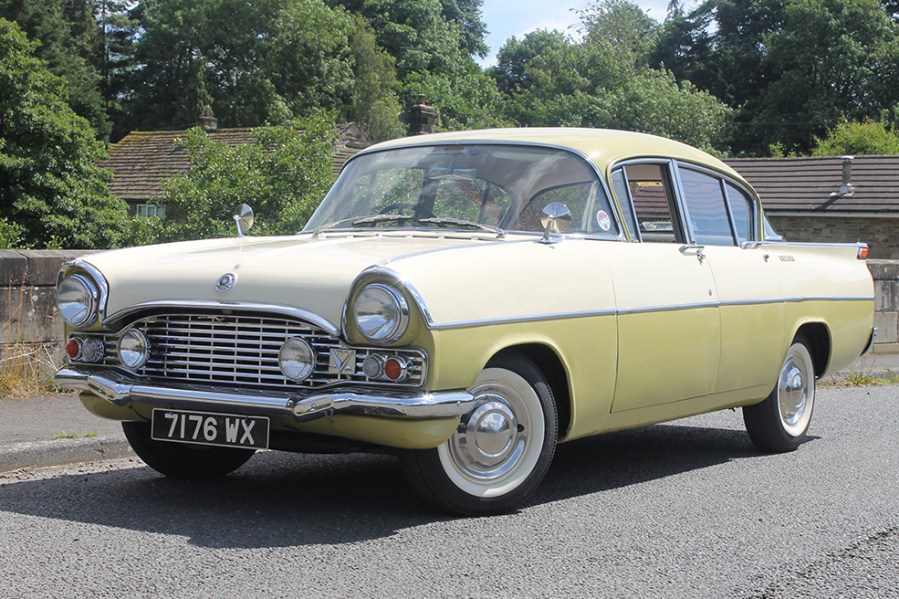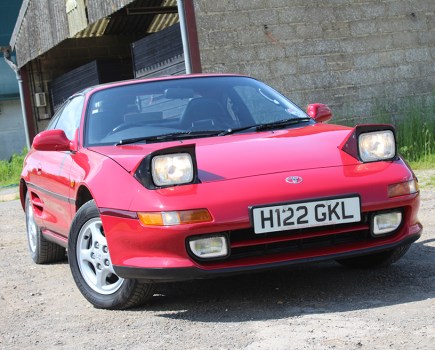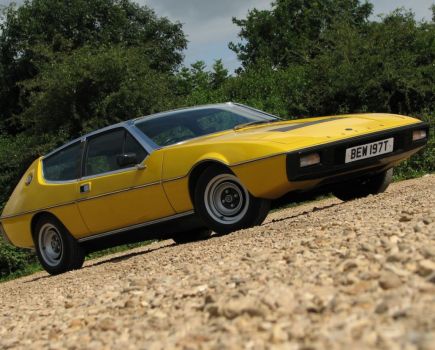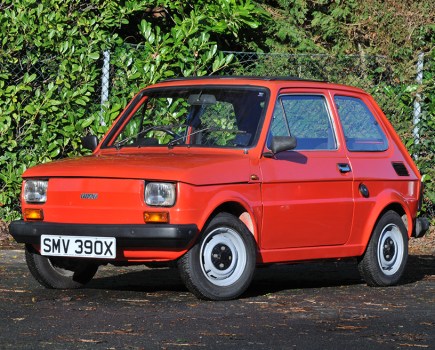With its US-styled wraparound glass, exaggerated fins and massive chrome bumpers, the Vauxhall Cresta is a fine example of 1950s British Americana
Words: Iain Wakefield
By the mid-1950s, British motorists were admiring the sleek, glamorous saloons emerging from the United States. These large, stylish cars made British family saloons look dull by comparison. Although the sheer size of these ‘Yank tanks’ made them ill-suited to Britain’s narrow roads, their bold designs captured the imagination. Styled with a nod to the Space Age, these American cars contrasted sharply with the post-war austerity still present in many British-made vehicles.
British saloon choices were limited – Ford’s 1956 MkII Consul, Zephyr, and Zodiac stirred interest, but many offerings were uninspiring. British cars still featured interiors with wood veneer and leather, making them appear more utilitarian than stylish. With the rise of rock ’n’ roll and space exploration, British car buyers craved something fresh. In 1957, Vauxhall responded with the PA Cresta, inspired by the Buick Special.
The PA Cresta replaced Vauxhall’s E-series model and was sold alongside the Velox, which had debuted in the late 1940s. Both were powered by a 2262cc straight-six engine, driving the rear wheels through a three-speed column-change gearbox. The PA models featured a higher trim level and optional two-tone paint, radio, external mirrors and overdrive.
The PA Cresta and Velox were larger than their predecessors, with a column-mounted gearchange and a full-width front bench seat, seating six adults. The Motor magazine’s 1958 review praised the PA Cresta’s ease of manoeuvrability, refinement and passenger comfort.
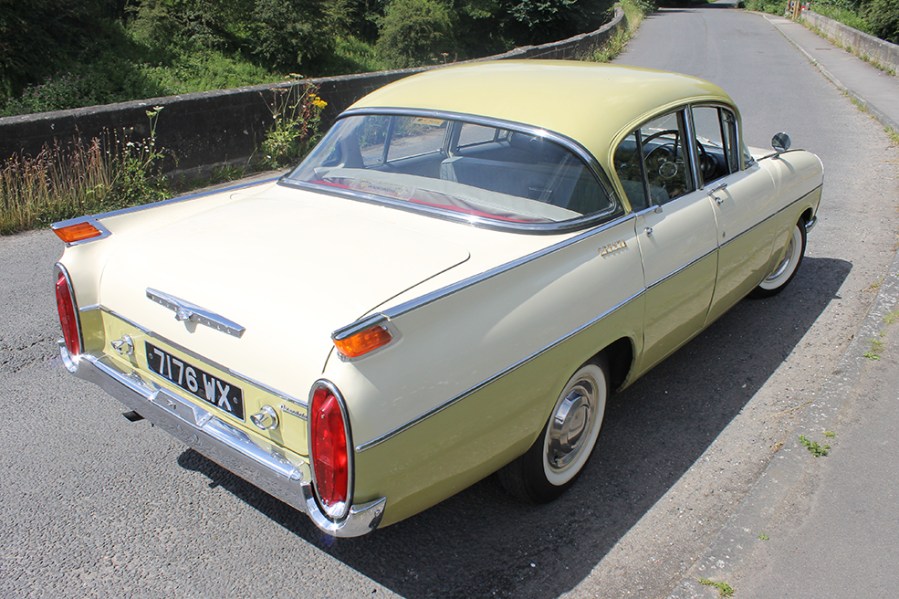
The 2.2-litre straight-six engine produced 78bhp, allowing a top speed of nearly 90mph which although not fast was respectable for a family saloon. The Cresta achieved 23.5mpg, making it economical to run, its steering was light and responsive and it offered satisfactory roadholding. The PA Cresta’s suspension featured independent coil springs and double wishbones at the front, with a live rear axle and semi-elliptic springs. The braking system included four hydraulically operated nine-inch Lockheed drums.
The car’s design marked a departure from its predecessors, with wraparound windows, a three-piece rear screen and prominent rear tail fins. Chrome bumpers with moulded overriders enhanced the Cresta’s transatlantic look.
In late 1958, the PA Cresta was priced at £1073, with £358 of that sum comprising purchase tax. Buyers could choose from two-tone colour schemes, while the interior featured up-to-date upholstery options.
As Britain entered the motorway age, its smooth ride made the PA Cresta a popular choice for long-distance driving. In 1959, the Cresta received its first facelift. A more powerful 2.65-litre engine was introduced in 1960, while 1961 saw automatic transmission and front disc brakes offered. The PA Cresta remained in production until 1962, when it was replaced by the PB series. It later became associated with the ’70s Teddy Boy revival, cementing its status as a classic.
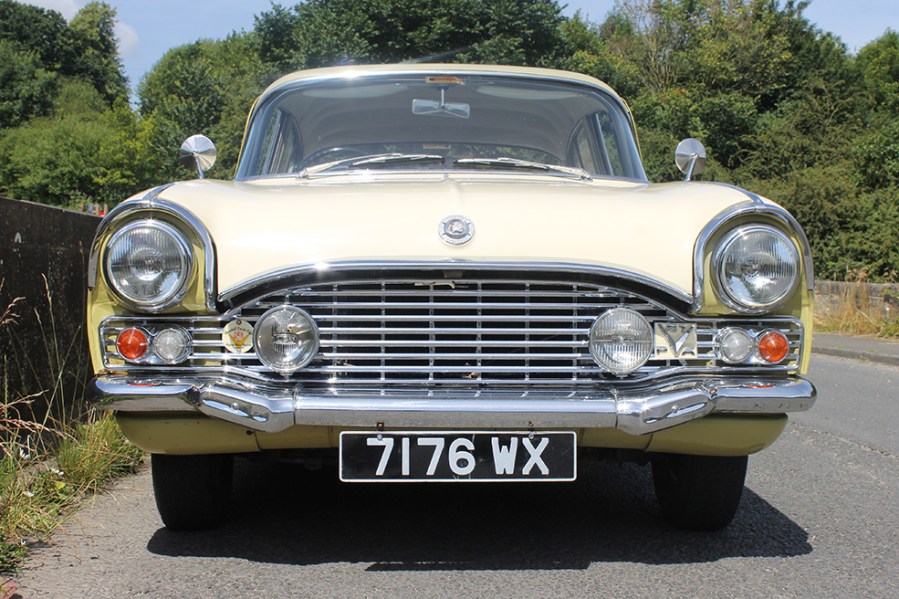
Vauxhall PA Cresta/Velox values
With only a few PA Crestas surviving the banger circuit and the ravages of rust, prices for those in excellent or original condition are rising significantly. Professionally restored cars naturally demand higher prices, reflecting the time and expense involved in their revival. A Condition One 2.2-litre PA Cresta will likely cost at least £8500, with a two-tone 2.6-litre model featuring desirable overdrive costing a bit more. The rare Friary-converted estate models in top condition will sell for whatever the owner requests. Saloons needing some TLC can often be found for £4000-£5000, while project cars and basket cases are available for under £1000. However, these are best suited to those with a passion for welding, deep pockets, and a very understanding partner.
Insurance Costs
1961 Vauxhall PA Cresta, £9000 value
Example quote: £109.97 or £127.97 with Agreed Value.
Quotation supplied by Lancaster Insurance. Tel: 01480 400761
Quote based on a 45-year-old marketing manager, access to another car, no claims or convictions, club member, 3000 miles per year, no modifications, living in SP2 0HL. Disclaimer: Subject to underwriting criteria. An additional charge may be payable. Authorised and regulated by the Financial Conduct Authority.
Bodywork
Despite over 173,000 PA Crestas and Veloxes being manufactured in the UK, Australia and New Zealand, few remain roadworthy today due to their tendency to rust, including on the roof panel. A common issue is corrosion around the extensive seams of the front and rear panoramic screens, which often goes unnoticed until it is too late. This can lead to the deterioration of the rubber seals, allowing water to seep into the car and damage the floorpans, door pillars and sills.
Rust is also a significant problem underneath the Cresta, as factory rustproofing was minimal and dealers would only apply underseal if the owner paid extra. Over time, rust may have weakened the car’s monocoque structure, and poor-quality repairs done to pass the MoT test may have worsened matters by trapping moisture behind patches.
As these cars become more valuable, buyers should be cautious of vehicles that have been hastily prepared for sale. When inspecting the bodywork, use a magnet on rust-prone areas such as wheelarches, sills and wing tops. If the magnet does not stick, the steel has likely been replaced with filler, suggesting a substandard repair. Examine the front and rear valance corners, boot floor, side panels and spare wheel well for corrosion or poor repairs. Missing chrome trim or badges should also be noted, as replacements are difficult to find.
Inspect the base of the A, B and C-pillars, especially beneath the carpets, as rust in these areas can be costly to fix. New old stock body panels are scarce, but Radford Panel Company (www.radfordpanel.co.uk) produces a limited range of custom repair panels, including headlamp panels, lower door skins, sills and wings.
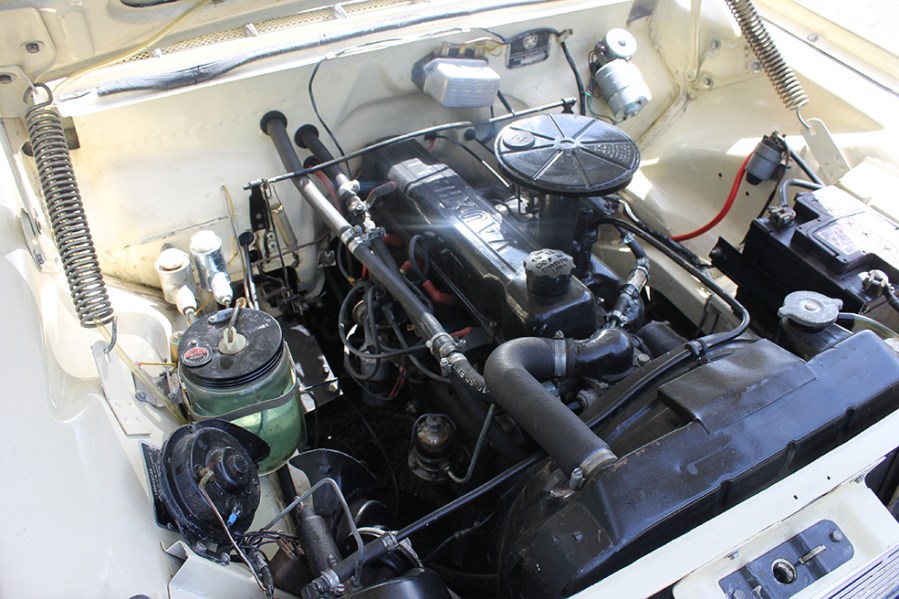
Engine and transmission
Vauxhall’s 2.2-litre straight-six engine is essentially the same unit found in the E Series Cresta and Velox and over the years it has proven to be relatively durable, provided the servicing schedule is adhered to. These engines deliver substantial low-end torque and a well-maintained PA Cresta can comfortably keep pace with modern traffic on fast A-roads.
The later 2.6-litre engine offers a more refined driving experience, particularly when paired with the highly sought-after optional overdrive.
A simple method to assess the health of a Cresta’s engine is to remove the oil filler cap and gently increase the revs. If blue smoke puffs from the cap, it indicates worn valve guides and/or bores, suggesting an engine rebuild is necessary.
While major mechanical parts can be hard to find, service items such as plugs, points and condensers are relatively easy to source. However, beware of cheap pattern parts. The best way to find parts for a Cresta is through clubs like the Vauxhall Cresta Club (www.vauxhallcrestaclub.co.uk), which has a section on its website for members to buy and sell parts.
The PA’s three-speed gearbox is fitted with synchromesh on all three forward gears. Overdrive, available as an option, operates on second and third gears. If a gear becomes difficult to engage, it’s often due to worn bushes in the extended linkage between the column change and the gearbox. Any gear jumping or excessive transmission noise signals serious gearbox issues.
Be sure to check the clutch carefully; a worn centre plate will require the engine to be removed, which is difficult due to the heavy six-cylinder unit. The PA Cresta uses a hydraulically operated clutch, so ensure there are no fluid leaks from the master and slave cylinders, as air in the system will make gear engagement difficult. Hydramatic automatic gearboxes are rare, and parts for repairs are very hard to find.
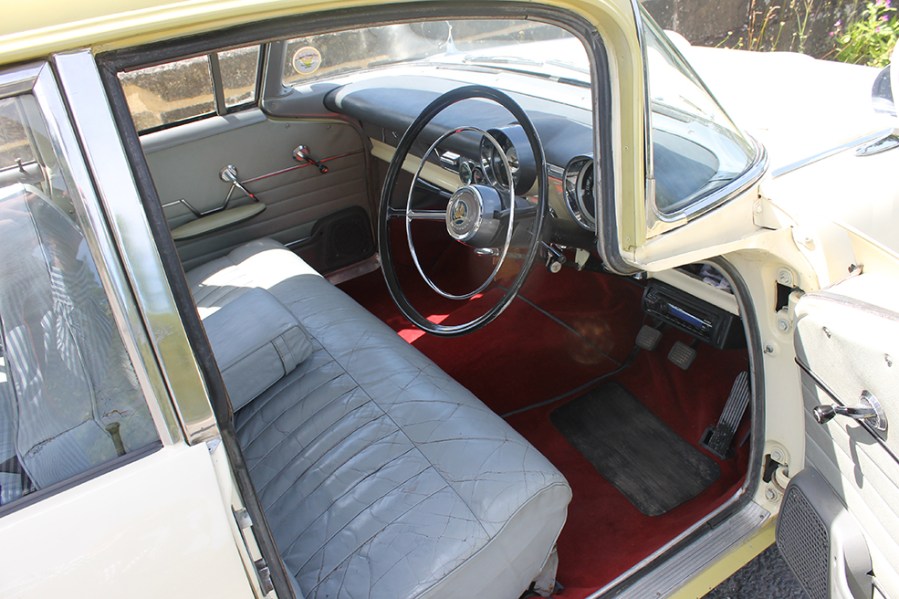
Interior and trim
Don’t be deterred by a worn interior if the car you’re considering has a solid body and seems mechanically sound. Although a brand-new interior for a PA Cresta or Velox isn’t readily available, a skilled trimmer can refurbish the seats and create new headlining, carpets, and door cards using materials and colours closely resembling the originals.
Although this can be costly, the club may be able to help source missing or damaged trim and locate hard-to-find second-hand parts. Inside a PA Vauxhall, there’s plenty of painted metal, which should generally match the body colour. However, some of the last Crestas produced featured small sections of ‘wood veneer’ trim inside the cabin to add a touch of luxury.
Suspension, steering and brakes
The PA Cresta’s suspension setup is relatively simple, with most parts readily available from specialist suppliers. When inspecting a Cresta or Velox prior to purchase, it’s crucial to assess the condition of the chassis, particularly where the main suspension components are attached. This includes the rear rails where the spring hangers are mounted, as any corrosion in this area will lead to an immediate MoT failure.
Special attention should be paid to the condition of the bodywork around the steering box mountings, as corrosion here can be difficult to spot and challenging to repair. If any rubber bushes, such as those at the end of the anti-roll bar, have perished, they can be replaced with polyurethane alternatives. However, this modification can stiffen the handling of the PA and potentially detract from the car’s original, often entertaining, road-olding characteristics.
Most PA Vauxhalls currently run radial tyres, but fitting these can affect the Cresta’s ride quality, which many enthusiasts value. Installing original-spec cross-ply tyres restores the PA’s handling, allowing the car to corner with minimal body roll, albeit with considerable tyre squeal when pushed hard. It’s also worth noting that later models were equipped with larger wheels to accommodate bigger brakes, and fitting these to earlier cars will alter the overall gearing, resulting in inaccurate speed readings.
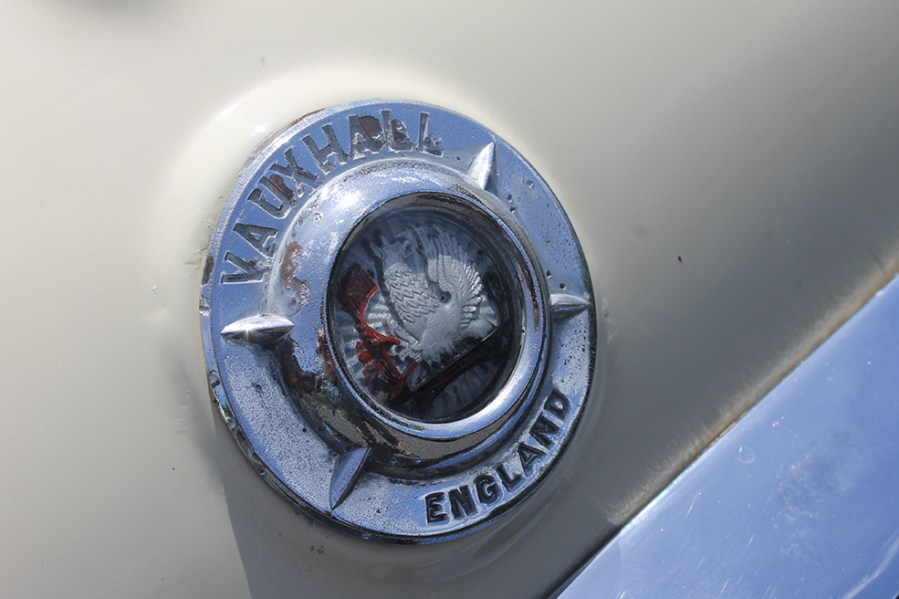
Vauxhall Cresta (PA): our verdict
Blending glamorous Transatlantic styling with European proportions, the PA Velox and Cresta make for great entry to affordable 1950s motoring. Find a nice one and you can enjoy comfort and luxury to rival Jaguar for a fraction of the price, while also standing out from the crowd.
MODEL TIMELINE
1957 PA Velox introduced as more upmarket big brother to Vauxhall Victor. Cresta offered as luxurious range-topper with more equipment, chrome trim and more power.
1961 PA Velox Series 2 introduced with minor styling updates, suspension tweaks and more power.
1962 Series 2 Cresta joins Velox, also gaining new trim and higher power output.
1963 Both PA Velox and Cresta replaced by PB models, with bigger bodies and modern styling.

